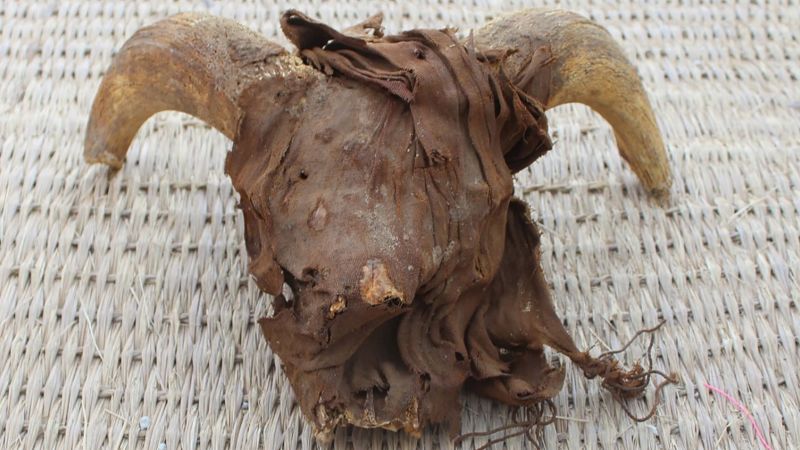Key takeaways:
- At least 2,000 mummified ram heads dating from the Ptolemaic period were discovered at the temple of Ramses II in Abydos, Egypt
- The ram heads are thought to be votive offerings indicating continuing reverence for Ramses II at the site
- The Egyptian Ministry of Tourism and Antiquities said the discoveries will expand knowledge of the site and are a testament to the enduring legacy of Ramses II
Egyptian archaeologists have uncovered a remarkable find at the temple of Ramses II in the ancient city of Abydos in southern Egypt. The team of archaeologists from New York University’s Institute for the Study of the Ancient World (ISAW) discovered at least 2,000 mummified ram heads dating from the Ptolemaic period and a palatial Old Kingdom structure.
The ram heads are thought to be votive offerings indicating continuing reverence for Ramses II at the site, which is believed to be around 1,000 years after his death. In addition to the ram heads, the team also found mummified ewes, dogs, wild goats, cows, gazelles and mongooses.
The discovery has surprised even veteran Egyptologists and shows the enduring impact of Ramses’ rule, as the skulls were left there a millennium after his reign.
The Egyptian Ministry of Tourism and Antiquities said in a statement that the discoveries would expand knowledge of the site over a period. The ministry also said that the find is a testament to the enduring legacy of Ramses II and the importance of the ancient city of Abydos.
The team of archaeologists from ISAW is continuing to excavate the site and are hopeful that more discoveries will be made. The ministry has said that the findings will be put on display in the near future.



Be First to Comment